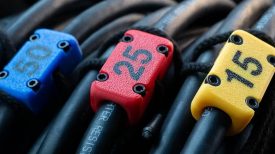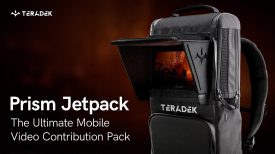Until recently there were only two options if you were looking for a PL-mount servo zoom lens that could be used handheld, and offered a focal range that allowed you to use one lens for most shoots – the Fujinon ZK4.7×19 19-90mm T2.9 Cabrio and Canon CN7x17 KAS S Cine-Servo 17-120mm T2.95.
The Fujinon 19-90mm was announced back in 2012, and even today it still remains one of the most popular rental house lenses. It has also proven to be a favourite lens option for many high-end documentary shooters. In 2014 Canon announced the 17-120mm CN7x17, which offered a wider and longer focal range than the Cabrio. Canon made the lens for the growing number of shooters who were transitioning from ENG 2/3″ sensor based cameras to Super 35mm digital cinema cameras such as the Sony F5/55, Canon C300 Mark II, Panasonic Varicam LT and the ARRI Amira. The CN7x17 proved to be a very popular lens choice due to its focal range, 180 degree focus rotation and ENG-style handling.

Just before NAB this year Fujinon announced another addition to their Cabrio family – the XK6x20 20-120mm T3.5. While not as wide as the Canon 17-120mm CN7x17, it does offer a constant aperture and much cheaper price point. While Fujinon will probably not admit it, the 20-120mm Cabrio looks like it’s being targeted as a direct competitor to the Canon CN7x17 KAS S Cine-Servo 17-120mm T2.95 lens, and to a lesser extent their own ZK4.7×19 19-90mm T2.9 Cabrio.
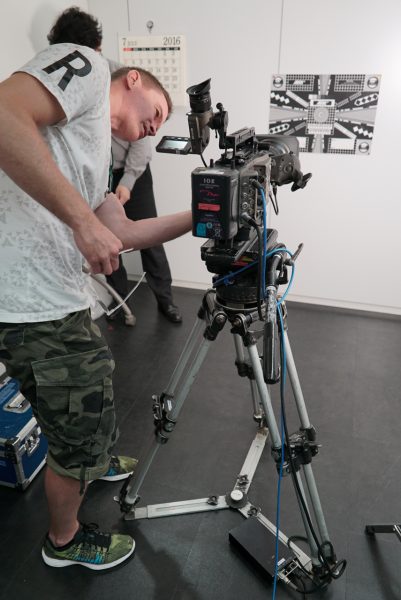
I recently got the chance to test out the XK6x20 20-120mm T3.5 Cabrio and also do some tests to see how it compares to the ZK4.7×19 19-90mm T2.9 Cabrio and Canon CN7x17 KAS S Cine-Servo 17-120mm T2.95. Before we get into those comparisons let’s take a closer look at the 20-120mm T3.5 Cabrio. I only had the lens for two days, so what I could shoot in that time was some what limited.
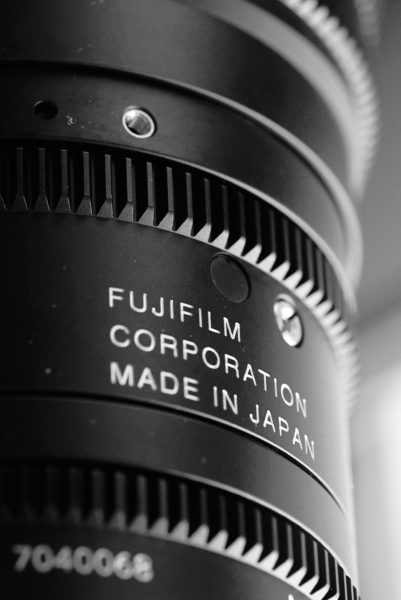
Build Quality And Weight
The first thing that strikes you about the 20-120mm T3.5 Cabrio is its build quality. Fujinon definitely haven’t cut any corners, and the 20-120mm feels as solid and robust as any of the company’s existing Cabrio range. Everything about the lens screams quality. It even features nice little touches such has luminous barrel markings for visibility in dark shooting situations. Unlike many other lenses the distance markings can be listed in feet or meters and can be changed by the user in the field. The lens weighs 2.9kg or 2.4kg with the servo unit removed. I found I could get the lens to balance nicely on the ARRI Amira, but I had to have the shoulder pad all the way forward and use quite a large battery. To be honest the lens does get heavy and like all the other servo driven PL zooms I wouldn’t want to handhold it for long periods of time. In terms of size the lens is 114 × 226 mm, making it just a tiny bit larger than the Cabrio 19-90mm (114 x 223 mm).
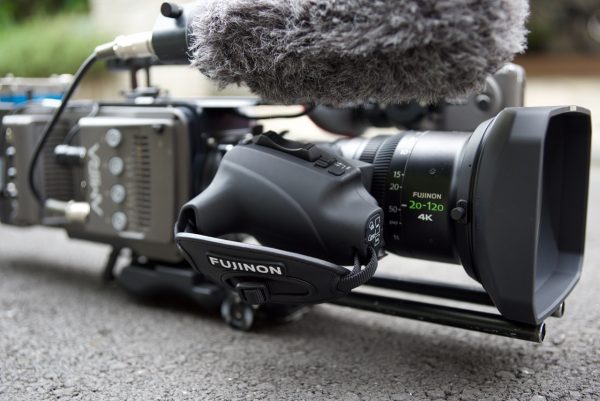
Features
The lens has a detachable servo drive that can be removed to accept industry standard cine motors and matte boxes. There is also LDS and /i metadata compatibility if you want to record the position information of zoom, iris and focus for computer animation and other uses. The digital servo on the 20-120mm Cabrio XK has 16-bit encoding, assuring that all lens data output is extremely accurate. The 20-120mm can be controlled using cinema industry standard wireless controllers, as well as existing Fujinon wired and wireless units. The XK6x20 also features flange focal distance adjustment and a macro function. On the servo grip itself there is a small knob where you can adjust the zoom speed as well as a QZ button. When you depress it and hold it down the lens zooms all the way in to 120mm which is very handy for getting focus quickly. The lens will stay at 120mm until you let go of the button, then snap back to your original focal length.
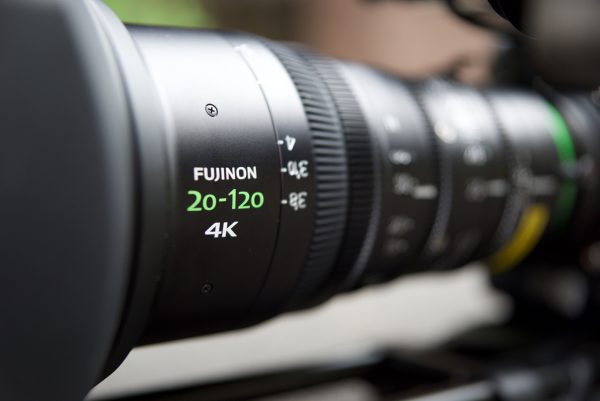
Sensor Coverage
The 20-120mm covers S35 sensor size (Super 35 Film Format – 24.84 x 13.97mm). This is quite a bit smaller than both the coverage of the Canon CN7x17 (31.7mm) 27.7mm × 15.5mm sensors, and Fujinon ZK4.7×19 19-90mm T2.9 Cabrio (31.5mm) which supports 27.45mm x 15.44mm sensors. While the 20-120mm’s sensor coverage is not a problem on a lot of cameras when shooting in 4K or UHD, I did find that when shooting on the ARRI Amira in UHD it did slightly vignette at the wide end, particularly if you stopped down the lens. For ARRI Alexa Mini users be aware that you will have the same problem when recording in UHD or 3.2K open gate. I also found that the lens does have a small amount of brightness fall off out near the edges of frame.
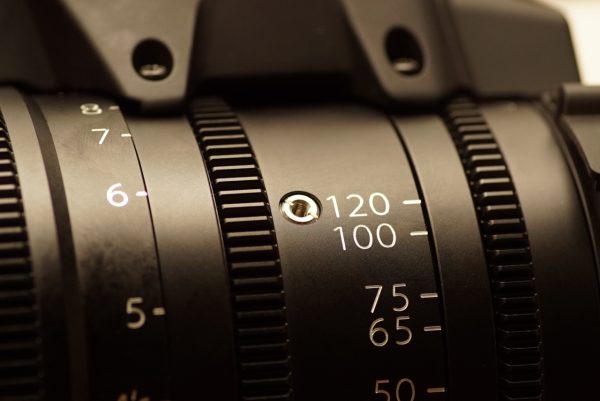
Focal Range
While the XK6x20 offers a good focal range of 20-120mm, a lot of shooters, particularly the ones this lens is targeted at, may find it not wide enough. The difference between 17mm and 20mm may not sound like much, but for a lot of documentary and reality TV shooters that is a gap as wide as the Grand Canyon. When your job calls for you to shoot in tight spaces you really want to have a lens that is a lot wider than 20mm. I would have preferred to see Fujinon make the lens wider at the expense of some extra range. In saying that after a few days with the lens I found the focal range to be quite nice for a lot of shots. In defence of the 20-120mm, I don’t feel that either this lens or the Canon C7x17 can be a total one lens solution, even when using the center crop function on cameras such as the Sony F5/55 or Arri Amira.
If you do want the lens to go wider there is a Schneider wide-angle diopter that fits on the front of Cabrio. The clamp on Century lens is 114mm diameter, giving you a 30 percent wider image when the lens is set to macro. That allows the lens to achieve a 14mm focal length. This is unfortunately not a zoom through adapter, but for getting wider shots it looks to be an invaluable addition to the 20-120mm. The Schneider wide-angle diopter will retail for around $1000US.
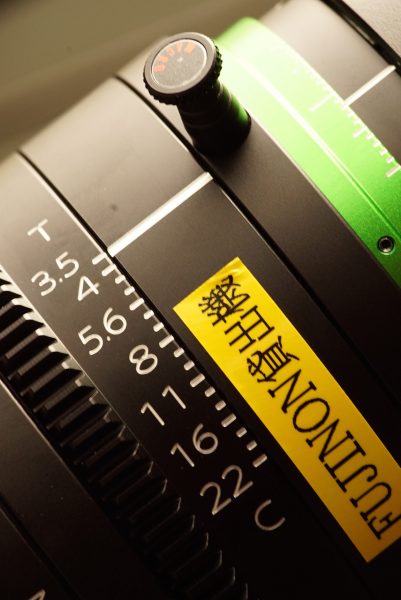
Constant Aperture
Just like the ZK4.7×19 19-90mm T2.9 Cabrio, the XK6x20 has a constant aperture across its entire focal range. At T3.5 it is fast enough that you can achieve a nice shallow depth of field, particularly if you use the longer end of the lens. The Canon CN7x17 has a faster aperture of T2.95, but it ramps up to T3.9 once you go above 90mm. For some users a constant aperture across the entire zoom range is a must, but there are plenty of shooters out there who are happy to live with with the ramping nature of the CN7x17. By giving the 20-120mm a constant T3.5 aperture Fujinon have had to compromise with the focal range. If they had tried to make the lens 17-120mm and keep a constant T3.5 aperture it would have undoubtably weighed a lot more and been a lot more expensive.
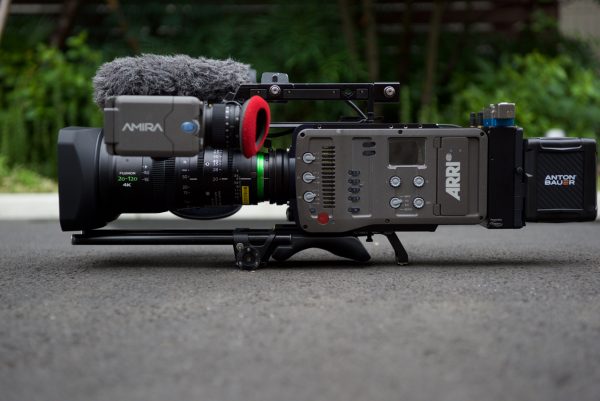
Image Performance
The XK6x20 features a nine-blade iris and has a focus rotation of 200 degrees. I found the lens to be nice and sharp and it maintains that sharpness right out towards the edges. Even when the lens was wide open it still produced nice sharp images. Like most Fujinon and other modern day lenses, the look is very clinical and clean. Chromatic aberration is very well controlled and the lens produces quite nice bokeh. The lens also does a nice job controlling flare (especially when using the lens hood) and even when pointed directly into the sun it manages to still provide a good amount of contrast without a lot of ghosting. When you want to use flare as an artistic choice, the XK6x20 produces pleasing results, but when you don’t, it’s well controlled.
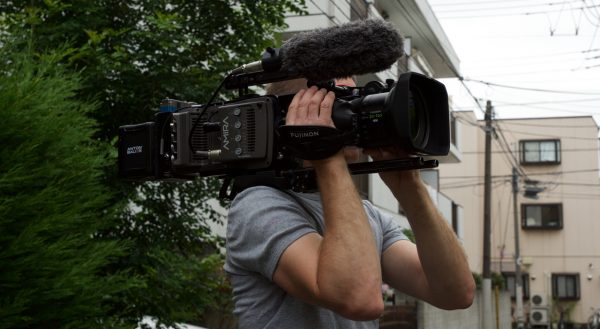
Usability
Lots of lenses look great on paper but for me one of the main factors when deciding on a lens is its usability. After spending a few days with the lens I really did enjoy using it and I found that it produced nice results. I must admit I haven’t been the biggest fan of PL servo zoom lenses, as I have always found their weight coupled with the ergonomics of where the servo actually sits in relation to the body of the camera a big downside. The servo grip on the lenses tends to be in a very uncomfortable position.
If you are used to using a servo-driven ENG lens on a 2/3″ broadcast camera you will know that your arm normally sits in a nice comfortable L shape when you’re gripping the servo. This is mainly due to the design of a broadcast camera. On digital cinema cameras the lens often sits further back as you need to balance the camera by sliding it back on your shoulder. The downside to this is that when holding onto the servo grip your arm is pushed back into more of a V-shape which also means that your wrist is bent backwards. This can be really uncomfortable, especially if you plan on doing a lot of handheld work. The Fujinon XK6x20, like all of the other servo-driven PL lenses, is guilty of this.
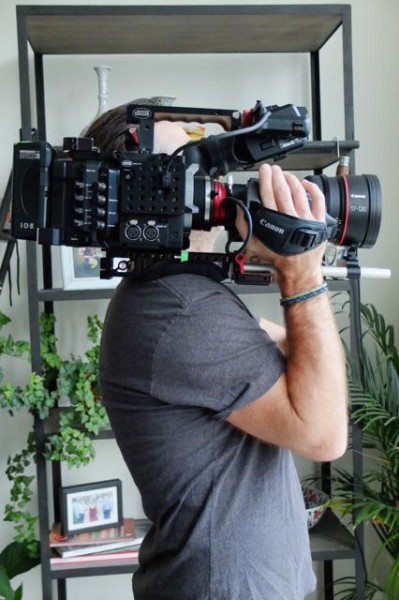
I must admit though that I did find it easier to hold than the Canon C7x17 which has all its weight right up the front of the lens.
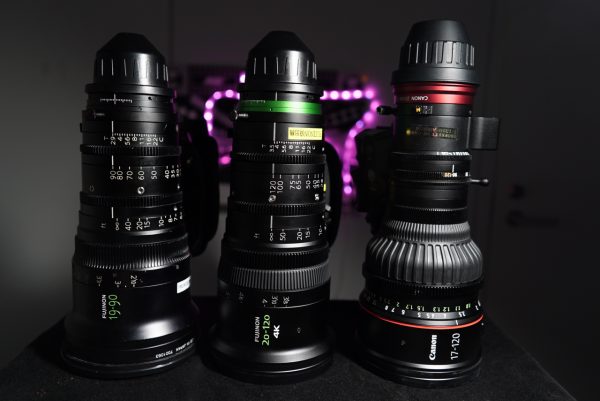
The big question is how does it compare to its closest rivals – the Fujinon ZK4.7×19 19-90mm T2.9 Cabrio and Canon CN7x17 KAS S Cine-Servo 17-120mm T2.95? I was keen to find out, and decided to do a series of controlled tests to see how each lens performed when it came to sharpness, focal range, focus breathing, macro ability, and to see the differences in the look of the bokeh and how each lens reacted to flare. Before we jump into those tests you can see some footage below that was shot on the ARRI Amira with the Canon CN7x17 KAS S Cine-Servo 17-120mm T2.95, which is clearly the lens to beat for this Fujinon.
Sharpness
I shot a test chart with the Fujinon 20-120mm set at T3.5, the Fujinon 19-90mm also at T3.5 and the Canon 17-120mm at T4. The Canon was set at T4 was because it was difficult to establish just where T3.5 exactly was on the lens. The information that was coming up on the Amira’s display didn’t show a T3.5 stop, so I decided to set it to T4. In theory this should give the Canon and the 19-90mm Cabrio an advantage as both were slightly stopped down, compared to the Fujinon 20-120mm that was wide open at T3.5. I also repeated this test with all the lenses set at T5.6. The cameras settings were always set exactly the same when comparing the lenses at different T stops. I also chose to set all the lenses at a 50mm focal length.
It was interesting to see that all three lenses were very close when it came to sharpness, particularly in the middle of the image. I would have expected the Fujinon 20-120mm to be slightly softer than the other two lenses given that it was wide open at T3.5. I was pleasantly surprised just how well it did. To my eye the Canon was the sharpest of the three lenses, but given it was stopped down slightly more than the other two lenses, it looks to be a fairly even contest.
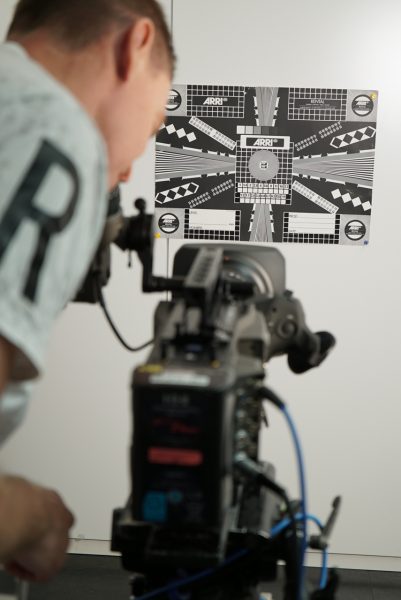
As far as corner sharpness goes, both the Fujinon 20-120mm and Canon 17-120mm performed quite well. The Fujinon 19-90mm was a little softer and couldn’t hold up against the other two lenses.
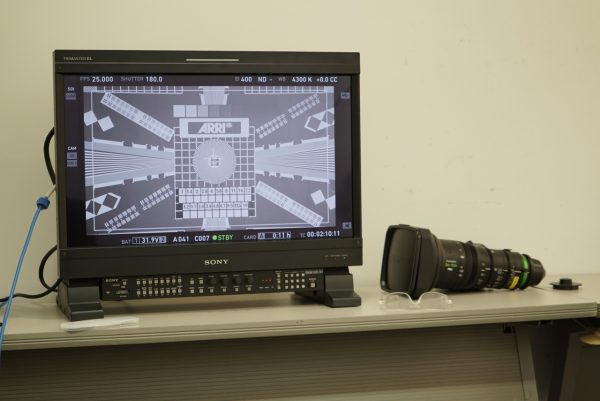
When they were stopped down to T5.6 and the tests were done again, all three of the lenses were very even. Cropping in 300%, the Fujinon 20-120mm, Canon 17-120mm and Cabrio 19-90mm looked to be on par. As far as corner sharpness goes the Cabrio 19-90mm while still not quite as good as the other two lenses did improve quite a bit when stopped down to T5.6.
Focal Range
This category doesn’t take a rocket scientist to figure out the results. The Canon 17-120mm has the largest focal range of the three lenses and you can see from the test footage above just what the difference is between 17, 19 and 20mm. There is quite a significant difference when you compare 17mm even with 19mm and if you’re looking for a lens that can give you a reasonably wide field of view then the Canon would be the best choice. If you do want to go wider on the 20-120mm there is a Schneider wide-angle diopter that fits on the front of Cabrio. The clamp on Century lens is 114mm diameter, giving you a 30 percent wider image when the lens is set to macro. That allows the lens to achieve a 14mm focal length. There is also a Schneider wide-angle diopter That works on the Cabrio 19-90mm and Canon 17-120mm.
Macro Capability
Just like ENG 2/3″ broadcast lenses, all three lenses have a built in macro feature that in the case of the Fujinons can be accessed by moving a lever at the back of the lens behind the aperture ring. On the Canon it is a smaller switch where you have to depress a button and then move it. It may be a personal thing but I prefer the operation of the Fujinon lenses when it comes to using the macro. This allows you to get quite close focus, especially when the lens is at its widest focal length. The only slight downside to this is that you physically have to have the lens very close to the object you’re filming. You can also use the macro function at slightly longer focal lengths, but it doesn’t allow you to focus as close as when the lens is at its widest setting. A nice trick is that you can set the focus on a more distant object and then use the macro to pull focus onto something closer to the lens. This was something I did quite a lot when using 2/3″ broadcast lenses and it works well on all three of the servo PL zooms.
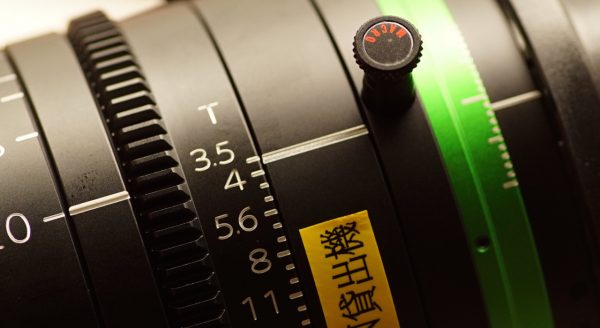
As far as regular close focus goes the Fujinon 20-120mm has a minimum focus distance of 1.1m (3’8″). With the Cabrio 19-90mm it is 0.85m (2’8″). The Canon 17-120mm also focuses at 0.85 m / (2’8″). This can be a problem using the 20-120mm when you’re handheld as your subject needs to be a full 25cm further back than if you’re using the 19-90mm Cabrio or the Canon 17-120mm.
Focus Breathing And Bokeh
All three lenses displayed some level of focus breathing, but it was very well contained given their long focal ranges. The lenses all produced quite nice bokeh, but it was interesting to see that both the Fujinon 19-90mm and the Canon 17-120mm tended to display some strange swirly effects within the bokeh itself. You can see it clearly in the video above when I cropped in 300% on the out of focus lights.
Flare
This is a very hard category to measure or quantify. How a lens reacts to flare from direct sources of light can be viewed in many different ways. One man’s art is another man’s graffiti, it really does come down to personal taste. Above you can see how each lens handles and reacts to flare and judge for yourself which one you prefer.
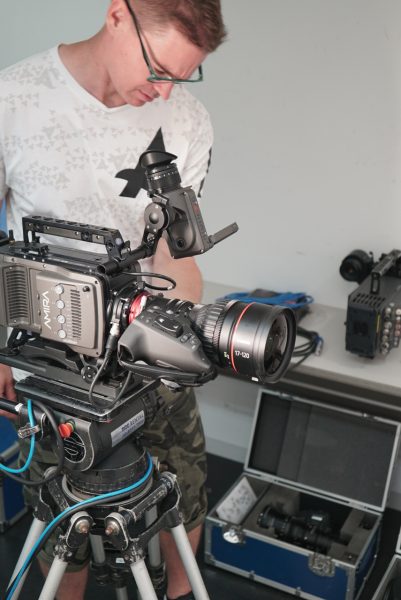
Size And Weight
I’ll come straight out and say it, all three lenses are quite large and heavy. They are however quite a bit lighter than most other PL mount zooms with large focal ranges. The Fujinon 20-120mm as I mentioned earlier weighs in at 2.9kg or 2.4kg with the servo drive unit removed. I measured this on a scale and found it to be accurate. The Cabrio 19-90mm weighs 2.7 kg or 2.2kg without the servo. According to Canon the 17-120mm weighs 2.9 kg, but after measuring it on a scale I found it to be closer to 3.1kg with servo and 2.9kg with servo removed. The Canon is also the longest of the three lenses at 254.9mm. The 19-90mm Cabrio is 223mm long and the new Fujinon 20-120mm is 226mm long. As far as hand-holding the lens I preferred the 20-120mm out of the three lenses, I find the Canon is just too front heavy and awkward to use on the shoulder. Again this is just my personal opinion.
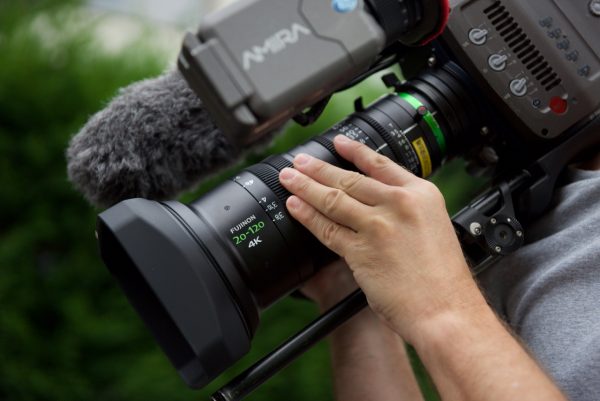
Features
All three lenses offer a lot of functionality and detachable servo drive units. They can also be powered directly off certain cameras as well as pass through metadata and on screen information to the shooter. I am not going to go into all the individual features of all three lenses as that would just take too long, but all three offer a very similar feature set.
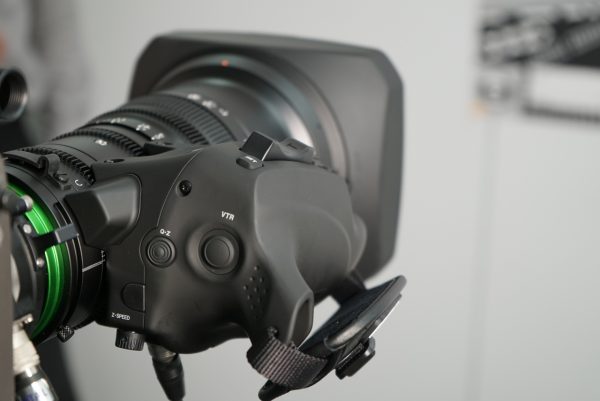
Build Quality
Both the Fujinons feel very well constructed and the material used on the lens housing feels a little more robust than that of the Canon. Saying that the Canon is also a solidly built lens. Both Fujinons also have proper industry standard 0.8 film MOD gears for focus, zoom, and iris control. With the Canon you only get a 0.8 gear on the focus barrel, the zoom only has the 0.5 and the iris 0.4 pitch gears. This may be a problem if you need to run a full FIZ (focus, iris, zoom) system.
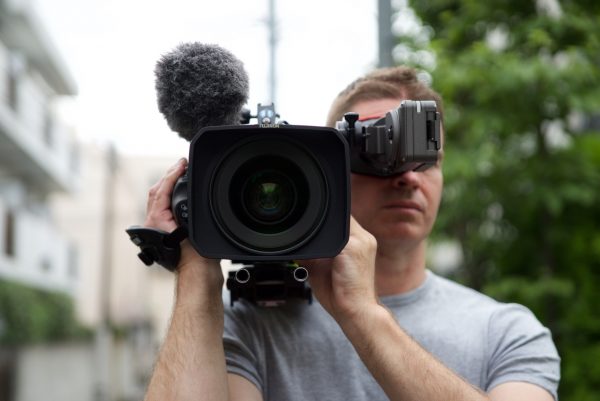
Operation
All three lenses are nice to operate although I did find the Canon a little harder to focus with due to its shorter focus throw of 180 degrees. You may find this strange – surely a shorter focus throw should make it easier to focus? What I found is that by moving the focus barrel just a tiny bit the image would go from sharp to out of focus quite abruptly. I found with the Fujinon 20-120mm (200 degree focus throw) it had a little bit more range of movement between when the image was sharp and not sharp. This definitely helped make focussing easier. Again this is just my personal opinion and I would always encourage potential buyers to try out these things for themselves. As far as manually operating the focus and iris, all three lenses feel very nice to operate. For shooters familiar with ENG lenses, they may find the operation of the Canon to be the closest to that of a broadcast lens.
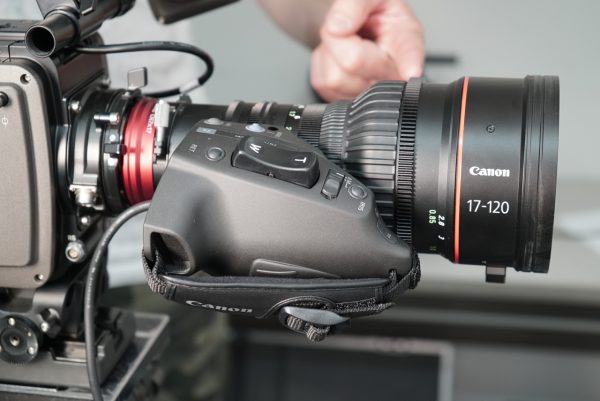
Aperture
The Canon 17-120mm is the only lens here that doesn’t have a constant T stop throughout its zoom range. It is T2.95 between 17-90mm and then it ramps up to T3.9 (I think it is actually T4). Both the Fujinon Cabrios have constant T stops of T2.95 and T3.5 respectively. While some shooters may be perfectly fine with a lens that doesn’t have a constant aperture, there are certain applications and jobs where it may be a problem. Again this completely comes down to your needs: I personally prefer a lens with a constant aperture.
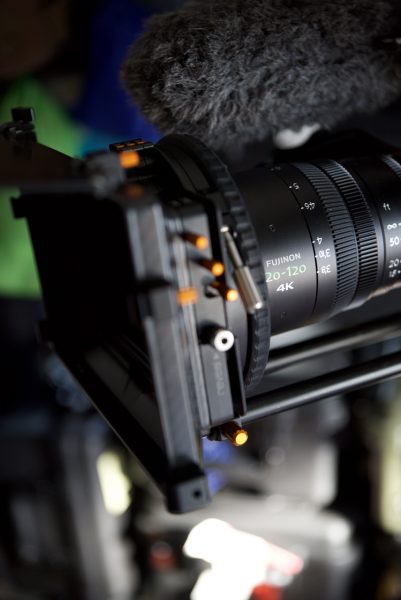
Sensor Coverage
This is where the Fujinon 20-120mm is behind the other two lenses, as it only covers sensors up to 24.84 x 13.97mm. The Cabrio 19-90mm covers up to 27.45mm x 15.44mm and the Canon 17-120mm 27.7mm × 15.5mm. The 20-120mm will not cover anything greater than 4K without some serious vignetting. As I mentioned earlier the lens vignetted slightly when shooting UHD on the ARRI Amira, and it will do the same on the ARRI Alexa Mini when shooting in UHD or 3.2K open gate. The 20-120mm does also have a small amount of brightness fall off out towards the edges of frame. The Canon 17-120mm will still cover a RED Epic’s Mysterium-X 5k sensor but there are some slight vignetting issues using it on the Dragon at 6k. The Cabrio 19-90mm has a very similar sensor coverage area as the Canon.
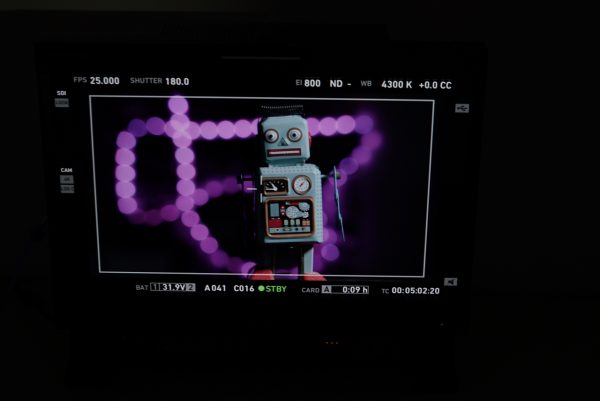
Look
This is yet another category that is very subjective. Like most modern day optics I found all three lenses lacked character. This is not to say there is anything wrong with any of the lenses, but I did find them to be very clinical. They are all sharp and perform well but none of them were really to my taste.
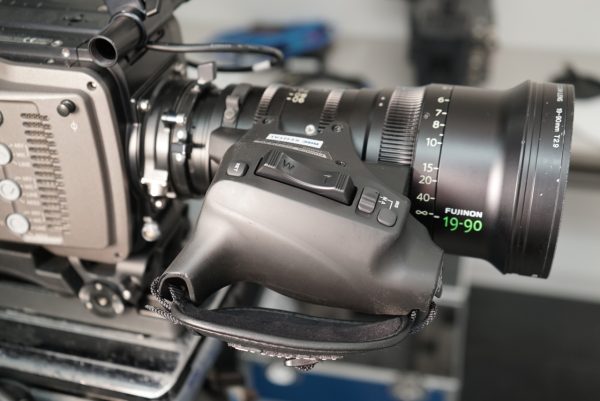
Price
There is a significant difference between the most expensive and cheapest of the three lenses. Despite its age the Cabrio 19-90mm still retails for $39,800 US. The Canon 17-120mm just had a massive price cut of $5000 US and can now be bought for $26,350 US. The Fujinon 20-120mm is $18,200 US, which makes it $8150 US cheaper than the Canon and a whopping $21,600 US cheaper than the Cabrio 19-90mm.
Conclusion
There really isn’t any clear winner here as all three lenses offer something slightly different. The image performance and feature sets are very similar. The only lens that does look a little out of place is the Cabrio 19-90mm, and that is only to do with its price point. Given my testing, it will be a hard sell for Fujinon to get people to choose the Cabrio 19-90mm over the new 20-120mm. The 19-90mm does have a faster aperture, is slightly lighter and is very marginally wider, but it is giving up 30mm at the long end. Both Cabrios share an almost identical look and the performance of the new 20-120mm shows just how far lens technology has come in the last four years. Don’t get me wrong I still think the 19-90mm is an impressive lens but its price pretty much rules it out as a possible winner in this evaluation.
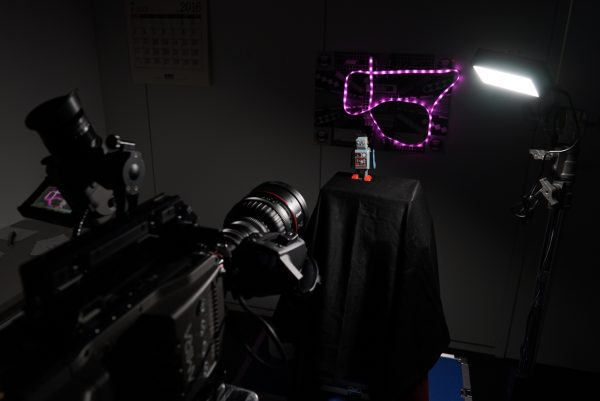
That just leaves the Fujinon 20-120mm and the Canon 17-120mm in a two horse race. With the recent price drop of the Canon, choosing a winner from these two lenses is a difficult task. The Canon is wider, but the Fujinon does have a constant aperture. The Canon may feel more at home with shooters who have moved from broadcast 2/3″ sensor ENG cameras, but the Cabrio is more than $8000 US cheaper. As you can see for every argument there is a counter argument. It really does come down to what you’re shooting and what your needs are. The biggest negative for me was the sensor coverage of the 20-120mm is quite limiting, and it really only allows the lens to be used on certain cameras. My personal opinion is that I prefer the Fujinon 20-120mm over the Canon 17-120mm. I found when I tested out the Canon for a few days that it was just too heavy and difficult to balance on the shoulder, given all the weight is in the front of the lens. I liked the range, but operationally it just felt too awkward for me to use on a daily basis.
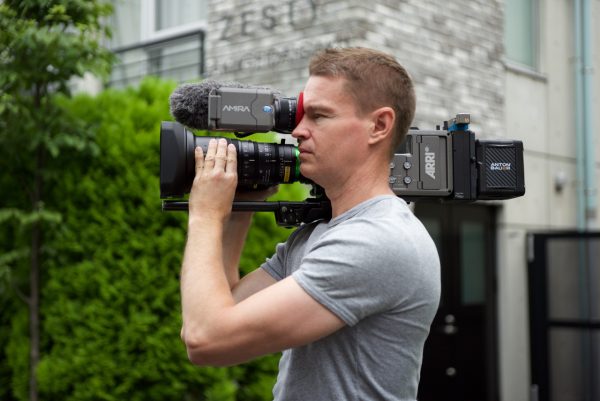
The 20-120mm Cabrio offers a lot of bang for your buck. It gives you image performance which is right up there with other Fujinon lenses that are more than twice the price. Again a lot of potential users will be put off by the lens not being wide enough, and that is a very valid point. As I mentioned earlier there is a Schneider wide-angle diopter that fits on the front of Cabrio, giving you a 30 percent wider image when the lens is set to macro. Unfortunately it isn’t a zoom through adapter so while allowing you to get a wider shot it is still limiting. The lens certainly isn’t for everyone, but overall I think Fujinon have done a very good job: lets hope that is is just the first in series of more affordable cinema servo zoom lenses.
Thanks to Fujinon Japan and NAC Image Technology for providing the lenses for testing.



